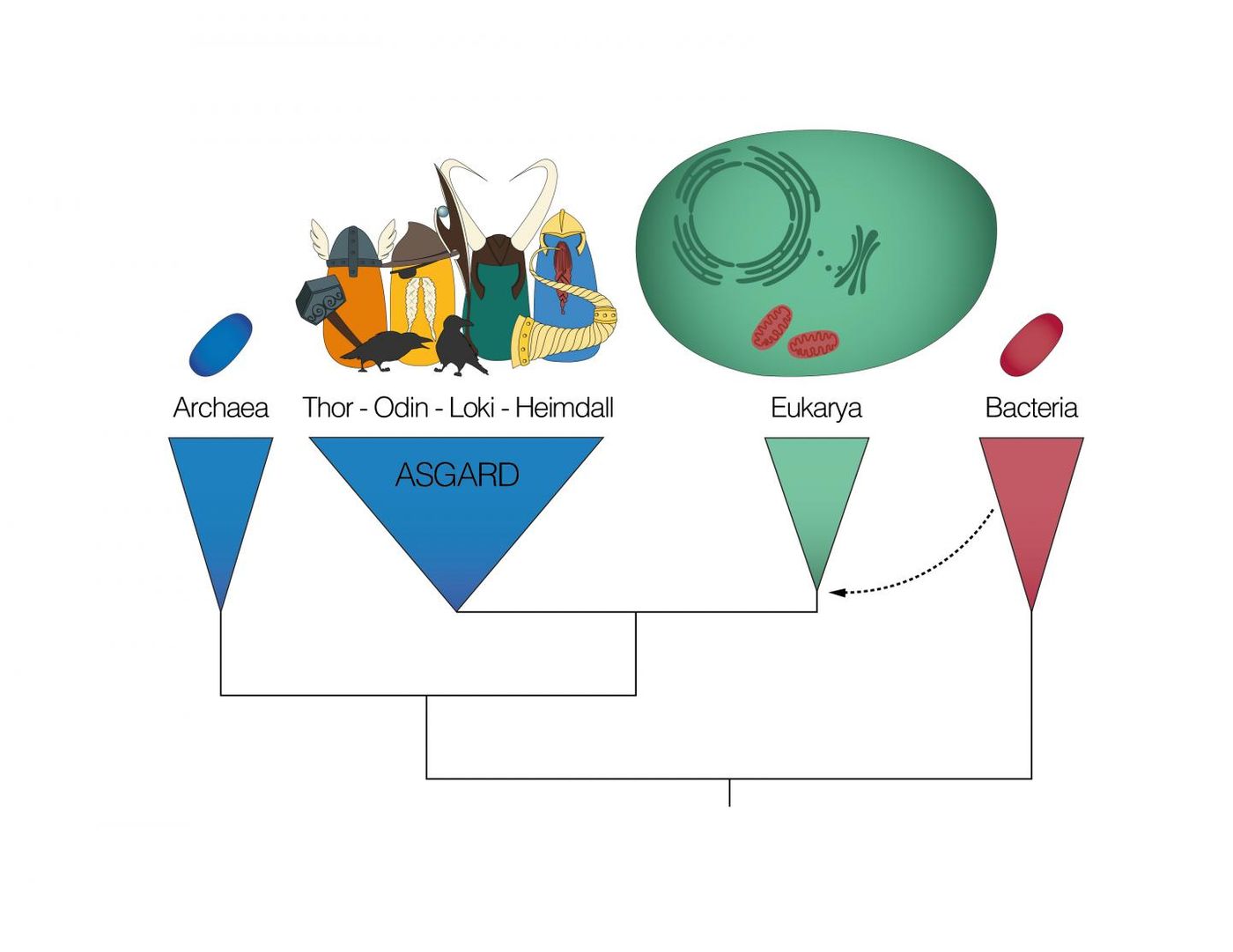Marvel Microbes Reveal Archaea Origins of Eukaryotes
Complex cellular life evolved from simpler organisms, and organisms with huge differences have similar evolutionary roots the further back one goes into the tree of life. Two of the three major branches on that tree are bacteria and archaea, both groups of tiny microbes. The other major branch, eukaryotes, includes animals and fungi. Bacteria and archaea tend to have small and relatively simple cell structures, while eukaryotes have much more complex cellular architecture. Important work by biologist Carl Woese showed that at some point, eukaryotes and archaea had a common ancestor, but many mysteries have remained about the origins of eukaryotic cells. New work published in Nature does not solve those mysteries, but it sheds light, seemingly confirming the archaea origins of eukaryotes.
"The evolution of complex cell types has been a long and complicated process that is poorly understood. By using new methods to obtain genome data from microbes that cannot be grown in the laboratory, we identified a new archaeal group that is related to the host cell from which eukaryotic cells evolved. These are very exciting times," commented the leader of the new study, Thijs Ettema of the Department of Cell and Molecular Biology, Uppsala University.
Thijs Ettema published work in 2015 describing the genetics behind “Loki,” an archaeon residing on the ocean floor, which represents the closest living microbial relative that complex cellular life has. The current study corroborates the previous work and identifies and characterizes several new Loki-related archaea.
"These organisms are our closest microbial relatives, and we know next to nothing about them. Current methods allow us to take a first genetic sneak peek. It is really exciting!'' said Ettema.
"Our findings are based on analysis of genetic material that was directly obtained from the environment. We have actually never seen these cells,” explained co-lead author Jimmy Saw, researcher at the Department of Cell and Molecular Biology, Uppsala University.
"We named these new archaea Thor, Odin and Heimdall after the Norse gods, and together with Loki, they form the Asgard archaea. Interestingly, these new groups are found in various environments all over the world, and not only in the deep sea, as Loki. So far they are most abundant in sediments," said co-lead author Eva Fernandez-Caceres, of Uppsala University.
This work has demonstrated that eukaryotes likely evolved from a lineage related to the Asgard archaea. "Asgard archaea form a well-supported group with the eukaryotes in the tree of life. This indicates that they share a common ancestry,” said another co-lead author involved in the study, Kasia Zaremba-Niedzwiedzka, of Uppsala University. "This part of the study was rather complicated, and we would clearly benefit from having more data. This is not the end of the story, rather the opposite!"
The researchers were surprised after taking a closer look at Asgard genomes. "We found that Asgard archaea share many genes uniquely with eukaryotes, including several genes that are involved in the formation of structures that give eukaryotic cells their complex character. Such genes had thus far only been found in eukaryotes, indicating that these archaea were somehow primed to become complex. However, the picture is far from being clear on exactly how this could have happened," said Anja Spang, a researcher in the Department of Cell and Molecular Biology at Uppsala University.
Thijs Ettema and his research group have shown through their study of archaea that such organisms can live in many other kinds of environments, not only on the ocean floor as previously thought. This knowledge is likely to aid their research.
"It would be great if we could isolate or grow Asgard cells, and study them under the microscope. I am convinced that this will reveal more important clues about how complex cells evolved. Ultimately our microbial ancestry will be uncovered," concluded Thijs Ettema.
Check out more about the work of Woese in the following video.
Sources: AAAS/Eurekalert! via Uppsala University, Nature










